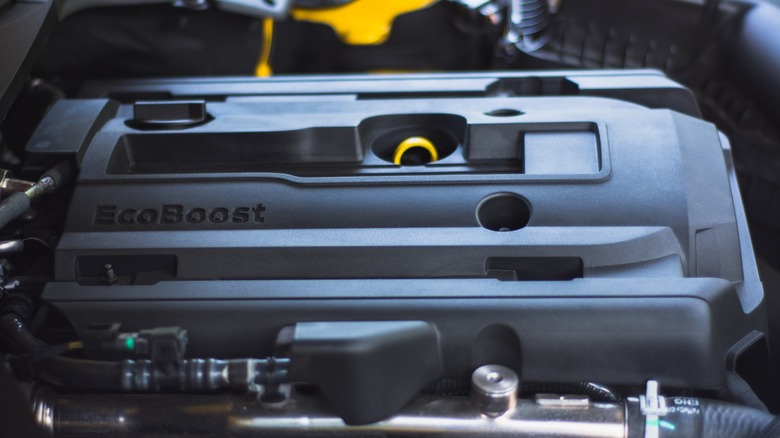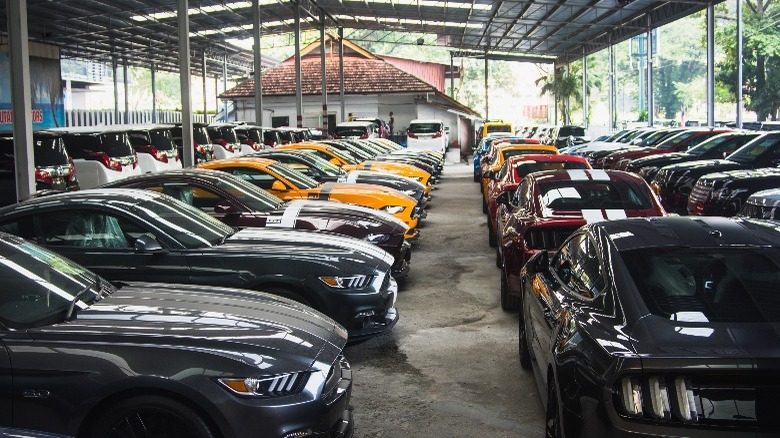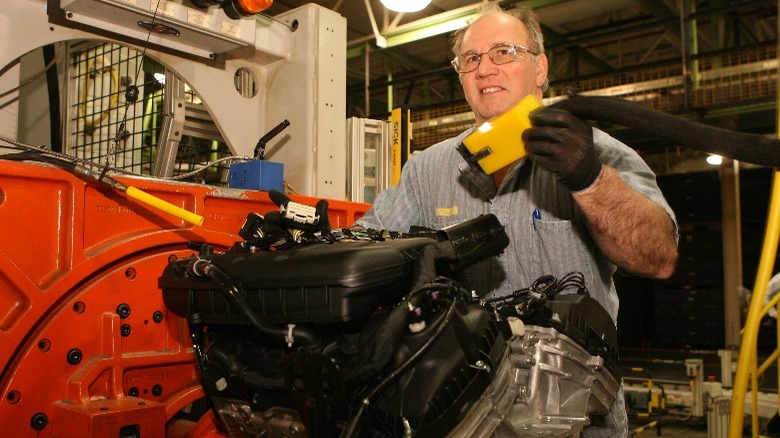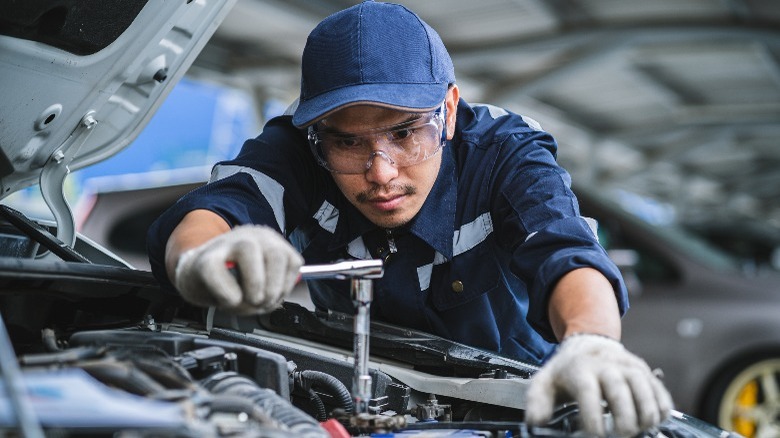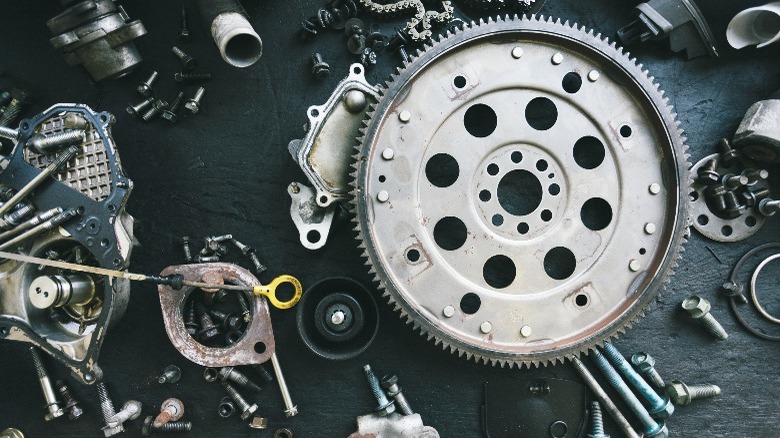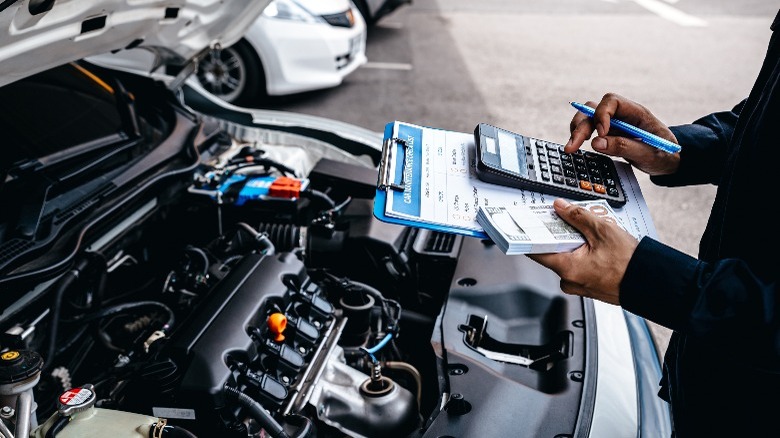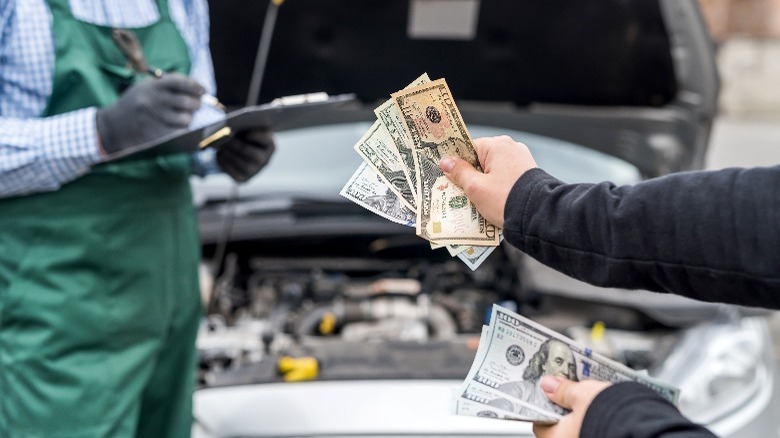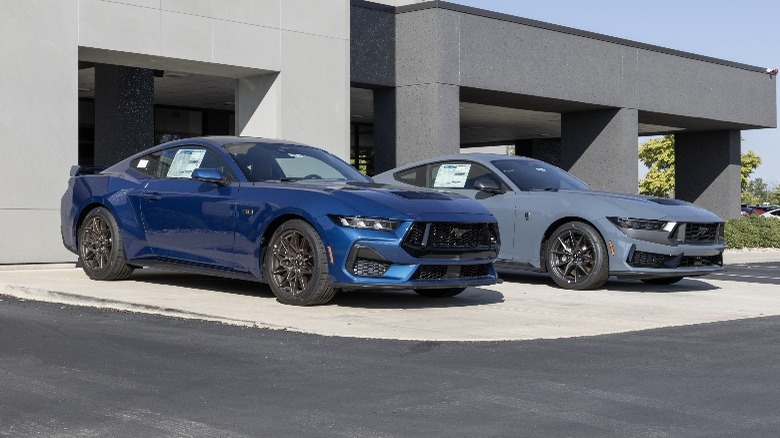How Difficult Is An EcoBoost Engine Swap, And How Much Will It Cost?
Ford introduced the EcoBoost engine for the 2010 model year, and while the idea of a turbocharged engine and direct injection fuel delivery was not new, it brought a breath of fresh air to the scene. The main highlight of the EcoBoost engine was an increase in fuel efficiency and performance, due to its three main features.
Firstly, by adopting a direct injection system, fuel is sprayed directly into each cylinder with precise volume and timing, leading to a more efficient burn. Next, the EcoBoost came with a turbocharger that used exhaust from the combustion chamber to force more air back into the chamber for more powerful combustion. This creates higher performance and faster acceleration when needed. Using the exhaust also made EcoBoost engines create lower emissions, 15% less than regular engines. Lastly, through what Ford calls Twin Independent Variable Camshaft Timing (Ti-VCT), the timing of the intake and exhaust cams could be controlled separately leading to improved efficiency.
While some EcoBoost engines are better than others, they're generally great. If you're an enthusiast craving even more performance and efficiency, installing one in your car could be the perfect next step. However, swapping in an EcoBoost engine isn't straightforward as a regular engine. Let's break down what you should know.
Potential EcoBoost engine swap options
There are several options when considering an EcoBoost swap. One potential route is the 2.3-liter EcoBoost engine, which you can find in cars like the Mustang and the Focus RS. The 2.3-liter is a powerful engine that can crank out up to 310 horsepower. It also has better fuel delivery than the 2.0-liter making it more suitable if you're looking to significantly improve your power output. It's a pretty versatile engine that would work well with a lot of car models, from compact cars to small trucks.
If you're looking for something with a lot more power, another enticing option is the larger 3.5-liter EcoBoost V6 engine. The "Cyclone" is commonly found in cars like the F-150 and the Explorer. With six cylinders, it pushes out up to 400 horsepower stock, and can be modified to output close to 600 horsepower. This is a great option if you're looking for all the performance you can get.
An EcoBoost swap is a pretty involved project to embark on, but if you're an enthusiast, it's worth considering. There is a wide range of options to choose from, so it shouldn't be hard to find the right engine for your swap. An added bonus that comes with it is the fact that aftermarket support and the availability of parts is virtually endless.
The complexity of the swap
An EcoBoost engine swap isn't merely a matter of dropping in a new engine — a lot of things come into play. The most important factor that will affect the difficulty of your swap is the compatibility of the engine you're swapping into your car and the model of the car itself. Swapping one EcoBoost engine for another is easier, but when you're swapping in a different engine family or different generation of the same engine family, you might have to make a lot of modifications to existing parts or get all new parts.
EcoBoost engines are also complicated than regular engines because they're turbocharged and use a direct injection system. The engine comes with a different turbocharger, intercooler, and boost control systems, all of which you'll have to account for. Also, because of the precision of the direct injection system, your engine management system will need to be properly reprogrammed or replaced and then tuned to make it compatible with the new engine. You also have to find a workaround in case of A/C and power steering incompatibility.
Outside of the engine itself, there are other parts to consider. The engine mounts might require some modification to fit properly. You also have to make sure the transmission is compatible with the new engine, or source an adapter if it isn't. Wiring harnesses might need alteration, and the exhaust system could require adjustments to accommodate the new engine.
Skills and tools required
An engine swap requires a pretty high level of mechanical expertise. This is especially so if you're swapping in a different variant of the EcoBoost than what is in your car or if your car didn't originally come with an EcoBoost engine.
Whether you choose to do it yourself or hand it over to a professional, whoever is tackling the swap will need to be familiar with the ins and outs of engine removal, installation, and motor engine modification. If you're fitting in an engine that wasn't designed for your vehicle, you'll need to make changes to the existing hardware like harnesses and mounts, so being proficient in fabrication, welding, cutting, and metal modification is important. It also helps to be great at problem-solving. During a swap like this, a lot of unexpected issues will pop up that will require you to be patient and resourceful enough to address them
As for the tools you'll need, outside the run-of-the-mill mechanical tools, you'll need some specialized equipment that may include an engine stand, an engine hoist, and tuning and diagnostic software. The exact tools that you'll need will depend on the exact swap you're undertaking.
DIY versus professional installation
The decision to tackle this swap yourself or hire a professional will depend on your skill level and what tools, parts, or other resources are available to you. To handle the swap yourself, you should have really good mechanic skills. You should also have a good understanding of how engine swaps work and it would help to have some experience with EcoBoost engines in particular.
Do some research and gauge the complexity of the potential swap. Doing it yourself means you could save a lot of money, letting you focus on the costs of parts, tools, and equipment. However, if it's something that you're not confident you'll be able to handle, it might be best to let a professional handle it.
Labor costs will definitely take up the majority of your budget if you choose to go down the professional installation route. However, the upside is that you can be rest assured that the swap will be done properly, as long as you go with a skilled and reputable mechanic. Additionally, if something goes wrong during or after the installation, the mechanic will likely bear the cost of repair or reinstallation. If you happen to make mistakes when doing it yourself, you would probably end up spending even more to rectify them, and you run the risk of damaging the car or the engine.
Estimated costs: Parts
The financial implications begin with the cost of the engine itself, whether sourced new or used. When sourcing a used engine, you have a couple of options. You could get a older car to serve as a project vehicle solely to utilize the engine for your swap, or maybe you or someone you know has a car whose engine would work for the swap. You could also find out if there are any engine swap meets happening around your area — at an event like that, you may find one for free or for a fraction of the cost of buying a used one. Buying a used one from a mechanic shop is also an option.
The cost of an EcoBoost engine will depend the engine variant, whether it's new or used, its mileage, engine displacement, cylinders, horsepower, and more. If we take one of the most powerful Ford EcoBoost engines, the 2.3 liter four-cylinder GDI, you could get one for around $3,000 to $5,000. You can get a new engine kit directly from Ford for a little over $5000. Or if you're feeling brave, you get one off eBay where prices can get a lot cheaper. There are also countless auto part sellers that sell EcoBoost engine kits. Buying a used engine will obviously mean that you'll be getting it at a lower price, so if you're trying to save money you should probably go down that route.
Asides from the engine, you'll also need to budget for engine mounts, a potential transmission or adapter, a new or reprogrammed ECU, tuning software, and countless smaller components like wiring, hoses, and various hardware.
Estimated costs: Labor
If opting for professional installation, expect labor costs to form a significant portion of your budget. The amount you'll be spending on labor hours can vary widely depending on the swap's complexity. From speculations on various Ford forums, an EcoBoost swap could take between 16 and 20 hours, and sometimes even longer, but your local mechanic might take less or more time depending on their skill level, average turnaround time, and the specifics of the swap.
Regarding how much you'll be spending on labor, it's difficult to give an estimate because each mechanic shop will charge you a different amount for the same job. A couple of things could come into play, like how reputable the shop is. Smaller shops will likely charge you less than larger, more reputable ones. Some feel $3,000 for labor cost for an EcoBoost replacement, based on the standard of $150 per hour, is a pretty reasonable baseline expectation. It's best to get quotes from several shops or professionals specializing in this type of work. If you go with the first shop you walk into rather than exploring other options, your auto-mechanic could overcharge you.
Additional factors and unexpected costs
Unexpected issues can crop up during any engine swap. Parts might end up being more expensive than you budgeted for. You could have purchased the wrong parts and not realized. You might even make errors during the swap and need to get all new parts or embark on the process of correcting any damage done to the engine or the car.
Some surprises during the swap could require custom part fabrication. For example, if your engine or transmission is taller than the hood, you'll have to modify the structure supporting the hood. You should also look out for further wiring modifications, or other issues that could lead to unforeseen expenses.
Also, you should make sure that the engine swap complies with your local emissions and vehicle modification laws. Some states have lenient regulations and others are more stringent. Generally, according to the EPA, an engine swap is permitted as long as the resulting vehicle matches exactly to any certified configuration of the same or newer model year as the chassis.
Is an EcoBoost engine swap worth it?
Ultimately, deciding if the effort and expense are worthwhile boils down to your individual goals. An EcoBoost swap isn't an easy DIY auto project for beginners. A lot goes into tackling one correctly and it's important to not only evaluate whether you're equipped to handle it but also whether it's even necessary. The outcome of the swap may not be worth the time, money, and effort. Spending $15,000 to swap your engine and extend the lifespan of an already rundown car, when you can get a new car for a similar price might not be a practical choice.However, for a lot of enthusiasts, the benefits outweigh the potential challenges.
At the end of the day, a swap is an investment and whether or not it is worth it will vary with each person — it ultimately comes down to you and your needs. Make sure you consider whether the swap will result in your desired power increase, how great you are with car mods (or the cost of hiring a professional), how much time you can spare toward the project, and your overall project budget.
